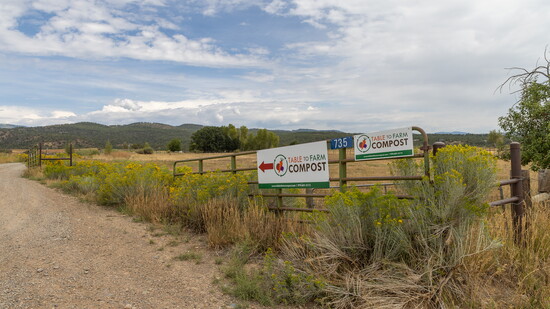3.5 million balloons. Visually, that represents the 8,500 tons of carbon dioxide gas captured since Table to Farm Compost launched in 2016. The figures are worth celebrating.
“As a lifelong environmentalist, I saw composting and waste diversion as one of the biggest impacts I could make in my career,” says TFC co-owner, Monique DiGiorgio.
The business began as a neighborhood effort across 100 homes to divert household food waste from the landfill. Left to rot, food waste emits carbon dioxide and methane gases. These elements swamp the atmosphere, forming an invisible shield that traps the Sun’s perpetually radiating heat. The more heat planet Earth absorbs, the more its weather patterns warp—like marshmallows in the microwave.
Savage floods. Dust storms. Gargantuan hurricanes. Bleached corals. Shrinking glaciers. River-draining droughts. The glut of distressing weather calamities in recent years is neither coincidence nor irreversible.
Since its start, Table to Farm has collected over 14 million pounds of food waste. That’s about 10 NASA space shuttles of food! And with over 800 homes in Durango and Pagosa Springs, 20–30 local restaurants, several schools, a brewery, and three grocery stores participating in food waste removal, Table to Farm now gathers an average of 2,700 tons of scraps annually—or about 270 blue whales!
Collected scraps are then taken to the company’s compost facility, where they are naturally converted into a soil amendment material packed with microorganisms, fungal strands, and nutrients that support healthier crops and gardens. Alongside local farmers and landscapers, contractors are also clamoring for compost to aid in projects spanning reseeding, stormwater retention, erosion prevention, plus oil and gas restoration.
The compost conversion process also prevents additional greenhouse gas build-up in the atmosphere, which helps reduce Earth’s atmospheric fever.
Taylor Hanson, Table to Farm’s other co-owner, points to other far-reaching benefits, stating, “People’s trash will be less stinky and it won’t need to be taken out as often. Bears and wildlife can’t scavenge in the dumpsters if we don’t have food in our trash. And we can extend the life of our landfill. That saves probably millions of dollars.”
In fact, it would save residents at least $2.5 million to build a new landfill cell, plus the additional expense of purchasing more land. The Bondad Landfill was designed to swallow 3.9 million cubic yards of waste. At nearly 70% full, operators expect the site to reach capacity by 2032.
“Roughly 40% of all the landfill waste in the county is food scraps,” DiGiorgio points out.
Early in 2025, the City of Durango passed a resolution to consider removing organic materials from landfill waste streams. DiGiorgio explains, “It basically commits the City to look into some type of organics diversion. How the community decides to divert its waste is really important. We’re here to support however that takes shape.” Residents can contact the City Council or join upcoming focus groups to take action.
Beyond food scraps, Table to Farm has become an integral repository for woody matter slashed from regional forests and neighborhoods doing wildfire mitigation. The City of Durango has teamed up with the company to glean fall leaves, pine needles, and pumpkins.
Sidelining more than the Great Pyramid of Giza in tons of greenhouse gas emissions is astonishing, but for now, the Table to Farm team will save the party balloons. The time to get wasted is when the whole town gets down on food waste diversion and conversion.
...Table to Farm has collected over 14 million pounds of food waste.
